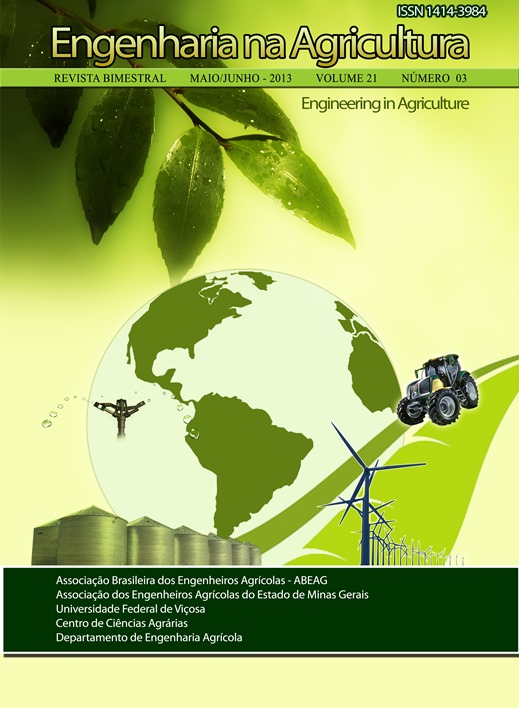POWER AND ENERGY DEMAND OF AGRICULTURAL TRACTOR ACCORDING TO THE GEARS OF WORK AND SOIL MANAGEMENT
DOI:
https://doi.org/10.13083/reveng.v21i3.400Keywords:
demanda energética, potencia de tracción, sistemas de labranzaAbstract
The objective of the study was to evaluate the power demand and energy consumption in three tillage systems and two tractor working gears. The experiment was conducted in the Agronomy-Airport experimental area of the Universidade Federal de Viçosa, located in Viçosa-MG, Brazil. Three land tillage systems were introduced: conventional, minimum and direct in a subdivided plots experimental design with two tractor working gears and four replications, totaling 24 experimental plots. The fuel consumption per hour and hectare, power and traction power and consumed energy in MJ ha-1, in each mechanized operation were determined; processing of the results using an analysis of variance in the software Statistics SPSS 21 showed that the working gear had a signifi cant impact on the obtained values for the traction power, the fuel consumption and the energy consumption in the three tillage systems, where higher values were obtained when using the B2 gear. The fuel consumption per hour and per hectare, and the energy consumption (MJ ha-1) signifi cantly differed in the three tillage systems, being lowest for the direct tillage system, higher for minimum tillage and the highest value was acquired for the conventional tillage system. The conventional tillage system was the largest consumer of energy.Downloads
Downloads
Published
How to Cite
Issue
Section
License
Authors who publish with this journal agree to the following terms:
The author(s) authorize(s) the publication of the text in the journal;
The author(s) ensure(s) that the contribution is original and unpublished and that it is not in the process of evaluation by another journal;
The journal is not responsible for the views, ideas and concepts presented in articles, and these are the sole responsibility of the author(s);
The publishers reserve the right to make textual adjustments and adapt texts to meet with publication standards.
From submission, the author is fully conceding the paper's patrimonial rights to the publication, but retaining the owner of its moral rights (authorship and paper's identification) according to Creative Commons Attribution-Noncommercial.








 Licensed by
Licensed by 